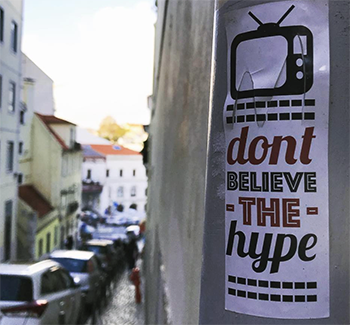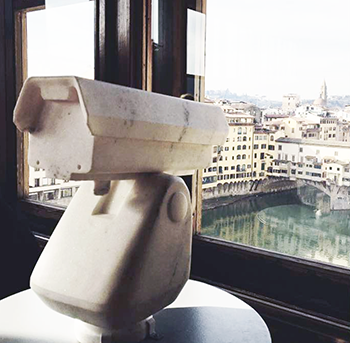Methodological Play
Media Archaeology
In addition to drawing on theories and methods of thin description and data visualization, our work has also been informed by the historical frameworks of media archaeology (Huhtamo 2011; Huhtamo and Parikka 2011; Parikka 2012) and “new media” history (Boddy 2004; Bolter and Grusin 1999; Gitelman 2006; Gitelman and Pingree 2003; Marvin 1990; Sturken and Thomas 2004). Errki Huhtamo concisely defined media archaeology as “a critical practice that excavates media-cultural evidence for clues about neglected, misrepresented, and/or suppressed aspects of both media’s past(s) and their present and tries to bring these in conversation with each other” (Huhtamo 2011, 28). Rather than focusing solely on how new technologies are changing writing, a media archaeology framework urges us to explore how our field’s current engagements with “new media” might be informed by the mostly forgotten histories of past English teachers engaging with diverse analog media.
While common parlance tends to equate the phrase “new media” with contemporary digital platforms, we take up Lisa Gitelman and Geoffrey Pingree’s (2003) assertion that “all media were once ‘new media’” (xi); thus, a study of radio in the 1930s or television in the 1950s is by this definition a new media history. Rather than assuming that today’s “new media” are inherently distinct from what came before, a media archaeology approach insists that we historicize the rhetorics of “newness” that have accompanied media change long before the arrival of computers. As Sturken and Thomas argue, “technologies take on a special kind of social meaning when they are new [. . .] A so-called new technology is the object of fascination, hyperbole, and concern. It is almost inevitably a field onto which a broad array of hopes and fears is projected” (2004, 1). If we can develop a more extensive accounting of the recurring hyberbolic rhetorics that have accompanied the introduction of new technologies in the field, we may be better able to gain some critical distance from the “hopes and fears” that we are projecting on the latest pedagogical technologies to capture our attention.

(j_palmeri 2017)
In historicizing the rhetoric of the “new” in the field, we’ve been particularly influenced by Errki Huhtamo’s topos approach to media archaeology, which seeks to map the recurring patterns of argument that have accompanied the introduction of new media over time. The topos approach to media archaeology is especially compatible with methodologies of thin description as both frameworks focus on calling attention to the mundane and commonplace rather than the the novel and interesting. Huhtamo noted that the topos approach resisted the rhetoric of the new by highlighting “the cliched, the commonplace, and ‘the tired.’ . . . Identifying ways in which media culture relies on the already known is just as important as determining how it embodies and promotes the never before seen” (Huhtamo and Parikka 2011, 14). If we can come to identify the recurrent topoi that have influenced how our field has constructed new media over time, we can begin to understand some of the sedimented ways of thinking about media that have both enabled but also substantially limited how English and writing teachers have imagined the possibilities for new media composing.
While media archaeology can be a useful methodology for excavating recurrent topoi that accompany new media, it can also can be a methodology that enables us to uncover novel or alternative paths not taken for pedagogical uses of media technologies. As Gitelman and Pingree argue in their articulation of the value of new media history,
There is a moment, before the material means and conceptual modes of new media have become fixed, when such media are not yet accepted as natural, when their own meanings are in flux. At such a moment, we might say that new media briefly acknowledge and question the mythic character and ritualized conventions of existing media, while they are themselves defined within a perceptual and semiotic economy that they then help transform. (xii)
When we look, for example, at how English teachers in the 1930s articulated uses of radio and film in relation to the medium of the book, we can record a complex moment in which the cultural assumptions about films, radio, and books were temporarily fluctuating—a moment in which teachers ever so briefly explored a range of alternatives for what these diverse forms of media could accomplish in the context of an English class. Although some of these early paths not taken in English media pedagogy might best be forgotten, others can offer fruitful inspiration to help us rethink pedagogical practices in the present.
Resisting a common disciplinary progress narrative that positions our current pedagogies as necessarily the most developed or evolved, an archaeology of media pedagogy “is not interested in coming up with universalizing models for technological progress, but in experimenting with alternatives, in quirky ideas, in investigating novel paths that fall outside the mainstream” (Parrika 2012, 1–2). While our data visualizations early in the book tend to “thin out” the quirky aspects of our corpus, our multimodal case studies in the second half of the book take delight in how recovering the quirkiness of past media pedagogies can help bring joy and imagination to our contemporary engagements with digital technologies—enabling us to imagine other pasts and futures for the field.

In addition to excavating alternative paths and possible futures for English pedagogies, we also elucidate the value of engaging alternative locations for studying new media history more broadly. In particular, we suggest that studying English educators’ historical responses to new media can contribute to a broader media archaeological effort to uncover the cultural practices of “remediation” (Bolter and Grusin 1999; Parrika 2012) that have accompanied new media. Arguing for the importance of studying the dynamic interrelationships of new and old media forms, Bolter and Grusin suggest that “what is new about new media comes from the particular ways they refashion older media and the ways in which older media refashion themselves to answer the challenges of new media” (Bolter and Grusin 1999, 15). Within the archives of English Journal, we have an opportunity to shine a light on how new media forms have both refashioned and been refashioned by the print book over time. Although the history of English education might seem an odd place to look to uncover broader cultural patterns of remediation, it is important to note that the teaching of English has been a nearly universal requirement in U.S. educational contexts throughout the twentieth century. Given that status, English teachers can be seen as one node in the complex, shifting assemblage that has shaped and reshaped our culture’s understanding of new technologies over the past century.
